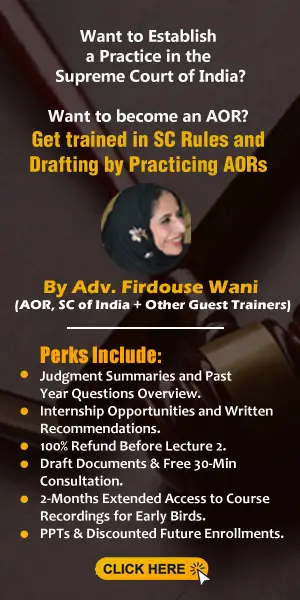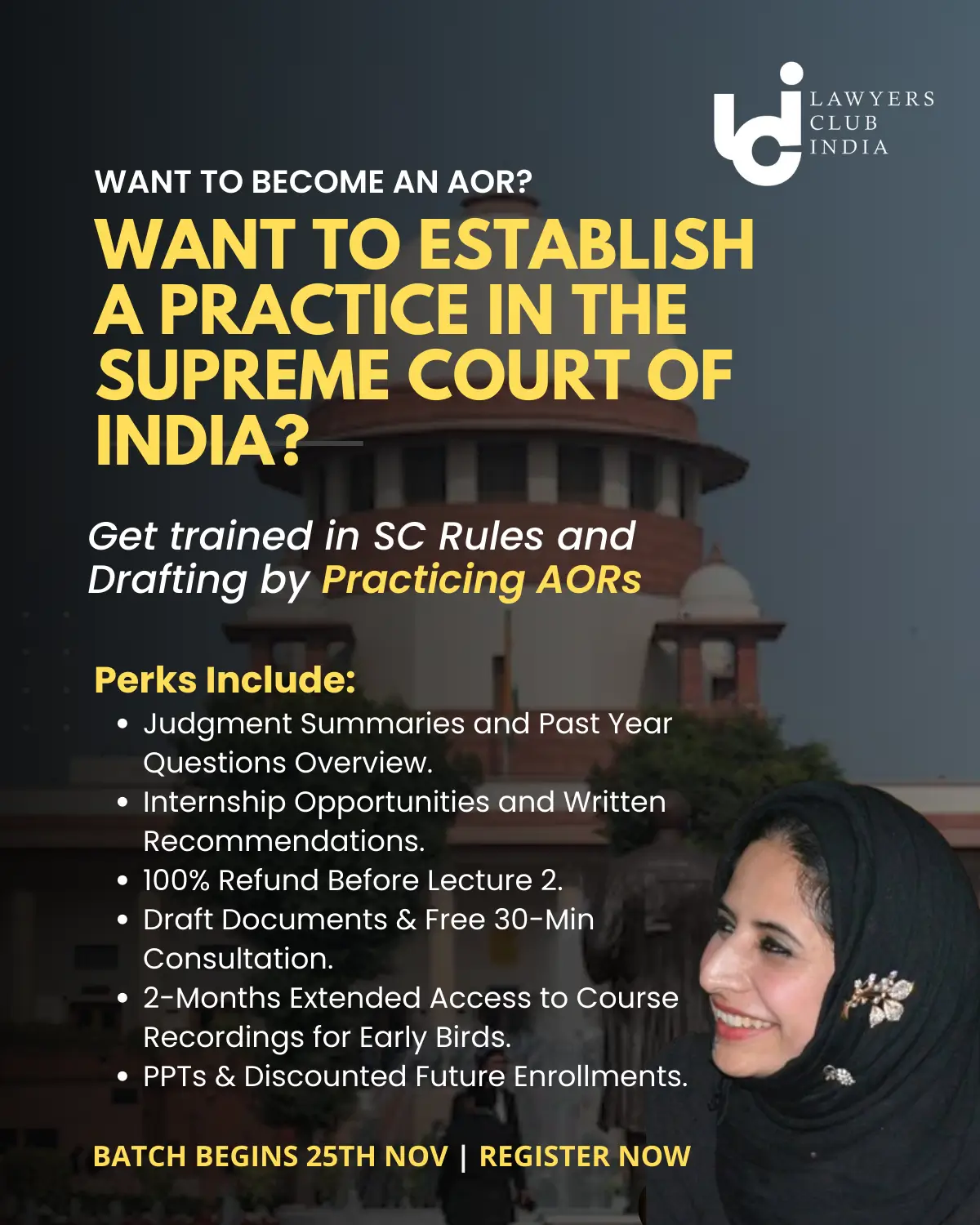1. What is the period of limitation for filing a criminal appeal? When does the period commence? What are the essential requirements in a memo of appeal, when the appellant is sentenced to a term of imprisonment?
ANSWER:
For a death sentence passed by the Court of Sessions or the High Court in its original jurisdiction, the period of limitation is 30 days. For any other order or sentence to the High Court, the period of limitation is 60 days, while for any other court, the period of limitation for the same is 30 days. For an appeal against an order of acquittal, the period is 90 days except in cases where the appeal has to be made after seeking special leave of the court. These periods start from the day the order or sentence has been passed by the Court. These time limits are specified in the Limitation Act, 1963.
The essential requirements of a memorandum of appeal include the section under which the appeal has been filed, name and other information about the litigants, the lower court’s judgement and decree, any other document or evidence concerning the case if necessary, etc.
2. Explain the procedure for making an application for review in (i) civil and (ii) criminal proceedings. Is further application for review of an order in the same matter maintainable?
ANSWER:
- (i) As per Order 47 of the CPC 1908,a person can apply for a review if he considers himself to be aggrieved by any order from which an appeal is not allowed, or any order from which an appeal is allowed but not preferred, or an order from a Court of small causes, and may apply for a review of judgement to the Court that passed the order.
For this, the person must be eligible to apply for the review. He must prove without doubt that he has discovered some new important matter or evidence, which at the time of passing the order was not within his knowledge or could not be produced even after the exercise of due diligence, or he must convince the Court of a mistake or error in the judgement.
The rules for applying for review will be similar to the rules for filing an appeal, but with the necessary changes. This means the application must include information such as the name and information about the litigants, the previous judgement, the new evidence or matter that has been found, etc. - (ii) The review process for criminal cases, while not explicitly mentioned, is provided under the CrPC 1973. There are certain remedies available, like appeals and revision. A lower court can refer a case to a higher Court, if it feels that the said case requires judicial interpretation by the higher judiciary. This right of the subordinate court can be exercised when the Court finds the validity of an act, ordinance, or regulation to be doubtful. As evident, this process is not an alternative to the review process as it is used only when the decision of the court is still pending.
The aggrieved party may file an appeal to the higher Court if it feels that the decree passed by the subordinate Court contains mistakes or errors. This must be done within a span of 30 days from the date of issuance of the decree, as governed by the Limitation Act, 1963.
Another measure that could be taken by the aggrieved party is the process of revision. It means the act of revising or reviewing the judgement with the intention of locating and rectifying mistakes, if any. Sections 399 and 401 of the CrPC confer this power to the Sessions Court and the High Court respectively.
3. (a) What is the difference between a Writ of Mandamus and a Writ of Certiorari ? Please frame the prayers in the case of both the aforesaid Writs.
ANSWER:
The term Mandamus means “We Command” and is a writ that is issued in cases where a public authority has failed to perform their duties resulting in the infringement of someone’s rights, and this writ orders or commands them to do the said duty. It can be issued against any public authority, public body, lower courts, tribunals, and the government. But it must be noted that this writ is only issued when the said public authority fails to perform a duty that they are legally bound to do. If the said duty is discretionary, then they cannot be forced to do it.
The writ of Certiorari is issued by a higher court to either transfer the case to the said higher court or to squash the decision of the lower court. This writ is issued if the Court feels that the lower court is acting beyond its jurisdiction or if the order passed by the said court is unconstitutional or against natural justice.
The prayer of the writ of mandamus might look something like this:
In the facts and circumstances stated above the petitioner prays that the above mentioned public authority be directed to perform their duty, whose violation of said duty has resulted in this writ.
The prayer of the writ for certiorari might look like this:
In the facts and circumstances stated above the petitioner prays that the honourable Court takes up the aforementioned case or squashes the order of the honourable lower court.
(b) What is the difference between the scope of power conferred on the Supreme Court under Article 32, and the power exercised by the High Courts under Article 226?
ANSWER:
Article 32 of the Indian Constitution confers the Supreme Court of India with the power to protect and safeguard the fundamental rights of its citizens through the issuance of any orders, writs, decrees. This power can be exercised across the country. Article 226 grants the High Courts in India the power to issue the writs of mandamus, habeas corpus, certiorari, prohibition and quo warranto, to protect and safeguard the fundamental or legal rights of the citizens of India. This power can be exercised within the territorial jurisdiction of the respective High Court. The major differences between the two are that Article 226 is a constitutional right and cannot be suspended, while Article 32 is a fundamental right and can be suspended by the President of India under a National Emergency. Another major difference is that Article 32 is focused only on the infringement of a fundamental right while Article 226 has a much broader focus, on both fundamental and legal rights.
4. (a) Is the power exercised by the designate of the Chief Justice under Section 11 of the Arbitration and Conciliation Act, 1996 an administrative or judicial power? Please explain with reference to relevant case law.
ANSWER:
The nature of the power exercised by the designate of the Chief Justice had been a matter of great debate in the past. In the case of Sundaram Finance Ltd., the court had held that the power exercised is not of a judicial nature. The justification for the same was that the order of appointing an arbitrator was as per Section 11 of the Arbitration and Conciliation Act, which did not require passing any judicial order to appoint the arbitrator. The same was upheld in the case of Ador Samia Private Ltd., stating that the nature of the function discharged is of administrative nature.
Later, in the case of SBP & Co, the Court decided that the power exercised is not an administrative power, but a judicial one. This decision was reached with a 6:1 majority.
This decision created an absurdity in law, as the fact that the Chief Justice was authorised to delegate his default power indicated its administrative nature, because judicial power cannot be delegated.
The 2015 amendment of the Arbitration and Conciliation Act brought about significant changes to this. It was no longer the Chief Justice who would appoint the arbitrator, but instead the Supreme Court or the High Court. The power of the Court was now confined to the extent of ensuring the existence of an arbitration agreement.
(b) Does the decision passed by the designate of the Chief Justice under Section 11 have precedential value ?
ANSWER:
The Supreme Court, in the case of State of West Bengal v. Associated Contractors held that although it was the Chief Justice who appointed the designate, his decisions could not be said to have been coming from the Supreme Court or the High Court. Thus, his decisions could not be said to have any precedential value.
Even though after the 2015 amendment to the Arbitration and Conciliation Act, which brought about multiple changes including substituting the terms “Chief Justice” with either “Supreme Court” or “High Court” as necessary, the decision of the Supreme Court in the West Bengal v. Associated Contractors case still stands valid.
Join LAWyersClubIndia's network for daily News Updates, Judgment Summaries, Articles, Forum Threads, Online Law Courses, and MUCH MORE!!"
Tags :Others













